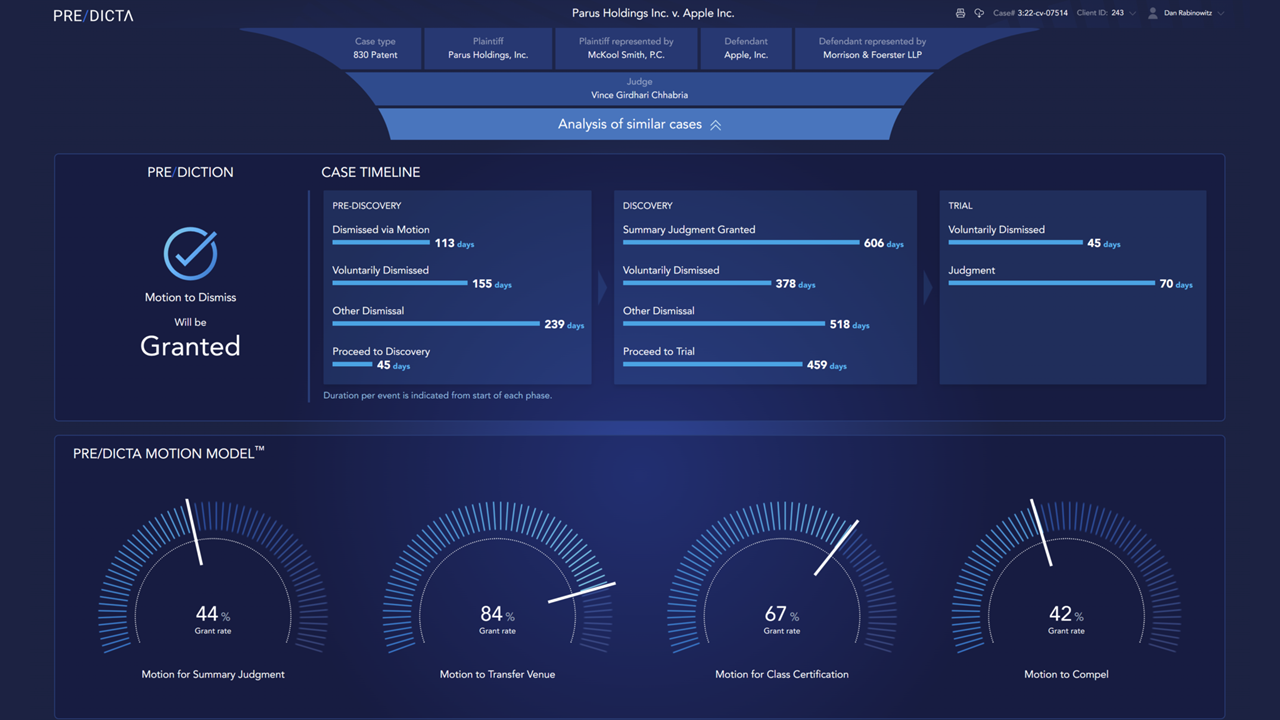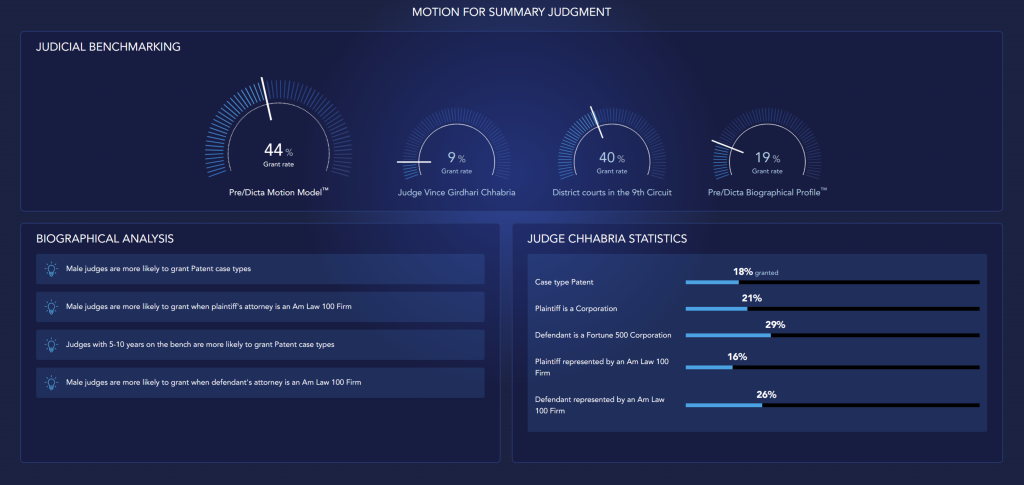Pre/Dicta, a litigation analytics platform that predicts how federal court judges will rule, is expanding to cover new motion types and also to predict litigation timelines.
Until now, the product, which launched in July 2022, covered only motions to dismiss, claiming to predict how a judge will rule with an accuracy rate of 85%.
Now, the product is expanding to provide outcome likelihoods for an additional four motion types: summary judgment, venue transfer, class certification, and to compel discovery.
It will also now predict timelines for key litigation events.
Notably, for these new motion types, Pre/Dicta is not predicting their outcomes, as it does with motions to dismiss. Rather, it is modeling outcomes for specific judges, cases and courts by using data profiling.
Pre/Dicta founder Dan Rabinowitz calls it finding their doppelgangers. The model looks not just at the judge in your case, but for other judges who are just like him or similar in their biographical data.
“We’re looking at like cases for like judges,” he said.
One reason that is important is because the specific judge in your case may never have ruled before on a class certification. But Rabinowitz says that by finding the judge’s twins, Pre/Dicta can show likely outcomes.
It does the same for case timelines, looking for doppelganger cases to show likely outcomes for the three primary stages of litigation: prediscovery, discovery and trial.
“At the high level, what our analysis has shown is that those elements of cases, parties, attorneys and judges have the highest correlation to predict outcomes — higher than getting into the law and the facts,” Rabinowitz said.
“In terms of finding predictive signals, that type of approach of party, attorney and judge classification yields the highest correlation of predictive signal.”
Pre/Dicta’s development of these new features followed from its acquisition in January of the data from shuttered legal analytics company Gavelytics.
Although Pre/Dicta acquired that data primarily for its state coverage, the data also included a lot of information about litigation events in federal court.
“When we were integrating the Gavelytics data with our own, we realized we could quickly augment our data to a full case lifecycle,” Rabinowitz said.
Using Pre/Dicta requires only that you enter a case number. It will then show a dashboard offering a prediction as to the likelihood of a motion to dismiss being granted. It will also show its analysis of similar cases. The Case Timeline shows likely outcomes for at each of the three states of litigation and the likely timeline to that outcome.
The dashboard also shows a Motion Model showing expected grant rates for the different types of motions.
A Judicial Benchmarking section shows grant rates for similar cases for the specific judge, as well as for the circuit and for judges with similar biographcial profiles.
 Robert Ambrogi Blog
Robert Ambrogi Blog
